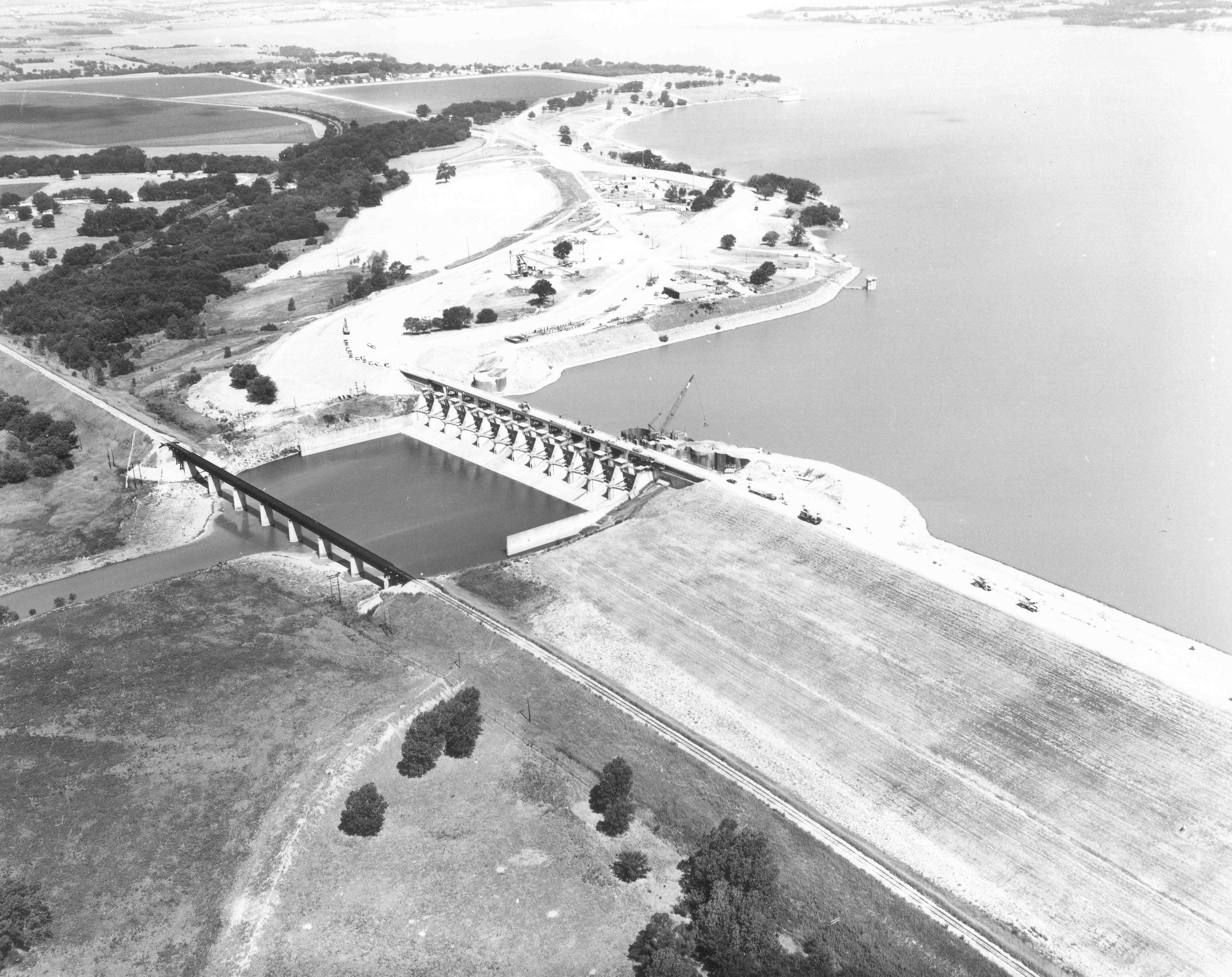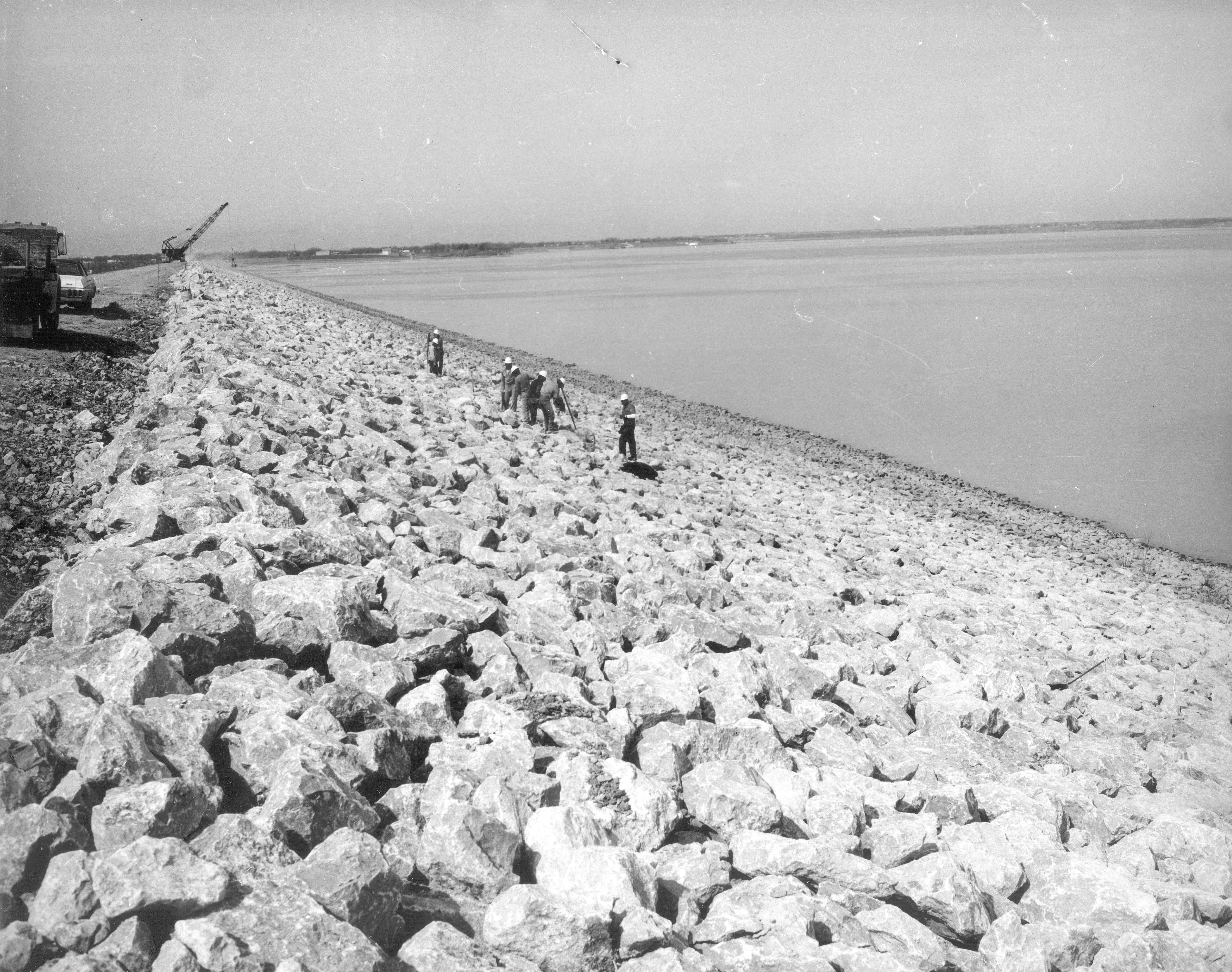Fort Worth District
Lakes and Recreation Menu
History and Mission of the US Army Corps of Engineers
(1) Two centuries ago
The Corps of Engineers, Department of the Army, celebrates 16 June as the anniversary of its founding. It was on this date in 1775 that Continental Congress authorized one chief engineer and two assistants for the "Grand Army" and one chief engineer and two assistants "in a seperate department". The Continental Congress on 27 December 1776, authorized General Washington to raise and collect an engineer force for a period of 6 months. And on 11 March 1779 "The engineers in the service of the United States shall be formed into a Corps and styled the Corps of Engineers..."
After the Revolution, the mission of the Corps was to train engineers and line officers for the Army, and to fortify the coast and frontier. For many years the US Military Academy and the Corps were to be the principal means of educating and training engineers in the United States.
Spurred by the War of 1812, the Corps recognized the critical need not only for fortification but also for roads, waterways and harbors to move troops and supplies and to facilitate economic expansion. While the construction of such improvements at that time was a state, local, or private responsibility, the Corps was constantly called upon for engineering assistance.
(2) Transportation and Navigation
The Corps of Engineers Civil Works Mission began officially 24 May 1824 when President James Monroe signed into law a bill passed by the first session of the 18th Congress to improve navigation on the Ohio and Mississippi Rivers. Thus, the signing of the legislation started the Corps Civil Works Project which for the past 150 years has stimulated economic growth and demonstrated time and again that the Corps cares for the American people and their environment.
Passage of this first Civil Works legislation was a landmark in the history of the Corps of Engineers and in the annals of water resource development. This was the beginning of the Federal program to improve navigation on this young nation's inland waters, which eventually grew to include Corps programs for flood control and its present-day comprehensive development of water resources throughout the nation.
(3) Preservers of the Environment
The role of the Corps in the preservation and the maintenance of the environment dates back to before the 150-year history of the Corps' activity in civil works projects.
During the 1840's a new and highly significant phase of the Corps' efforts began. These were the engineering and scientific missions set out to explore, survey, and map the West and to record for the first time the resources it contained. These expiditions, which were carried on to the later part of the 19th Century, collected information on meterology, geology, mineralogy, zoology, botany, the culture of the Indians, and many other things. They did much to stimulate the development of the West and added immensely to the scientific knowledge of these subjects.
(4) Preserved Future National Park Areas
Army engineer officers, John C. Freemont ("The Pathfinder"), Zebulon Pike (of Pike's Peak), and many others helped open up the West to find wagon, rail, and highway rights to the Pacific coast. At the same time these Corps officers systematically catalogued the wildlife and other resources in America's openning West. These officers cared enough, too, that they fought to preserve from private exploitation such national treasures as the areas that are now Yellowstone National Park, Yosemite National Park, and the Sequoia National Park.
(5) Conservation and Proper Use of Water
By the turn of the century a national conciousness of the need for conservation and proper use of water resources was developing. Comprehensive legislation for the protection and preservation of navigable waters was adopted in 1899. Under this legislation, the Corps of Engineers prohibits the dumping of garbage and other solid waste into navigable waters.
(6) Multiple-Purpose River Basin Planning
By 1908, the country was aware of the importance of water as a natural resoruce and the need for good planning for its comprehensive use and conservation. This was a radically new concept, far removed from the single-purpose, piece-meal method of trying to control and improve rivers in the past. The greatest advances made in water resource development came in the period between the two World Wars. Congress gave the Corps national responsibility for flood control in 1936 and authorized it to carry out comprehensive surveys, embracing power, navigation, flood control, irrigation, and other water uses, for each of the nation's river basins. Each survey was to deal with a river system as a single entity and to consider all of the problems and uses of water encountered by our complex, industrial society, and to present a plan of development.
(7) Flood Control Projects
Corps flood control projects have saved thousands of river valley land from ugly scarring and devastation. Projects also have made possible many urban renewal and beautification programs, such as the Pittsburgh Golden Triangle, the San Antonio River through downtown San Antonio, Texas, and floodways at Atchinson, Kansas, and at Oklahoma City, Oklahoma.
(8) Outdoor Recreation
The Corps build and manages over 400 recreation lakes. They were justified and built for combined flood control, water supply, recreation, and related purposes: 49 of them have hydropower plants. These lakes have been planned and are being managed by the Corps of Engineers in such a way that:
-Over 150 fish and wildlife mangagement areas with a combined area of nearly 1.5 million acres have been established.
-More than 450 state, county, and municipal parks, with a combined area of .25 million acres have been established at these lakes.
-The lakes provide more than four million acres of water surface and an equal area of land over 30,000 miles of shoreline, available for public outdoor recreation.
-Public recreation attendance at Corps lakes in 1977 totalled more than 420 million-more than at all National Park Service areas combined, or all National Forests: more than at most professional commercial sports combined.
(9) Small Boat Harbors
The Corps has provided over 250 small boat harbors and harbors of refuge, mainly for recreational boating, on the Great Lakes and coastal areas. Much of the boating among the banks and inlets of the Atlantic Coast is made possible and safe through Corps waterways. The 1,200-mile Atlantic Intracoastal Waterway from New Jersey to Florida, embracing and preserving the historic Dismal Swamp Canal, is used by numerous recreational craft.
Source: Handbook for Temporary Rangers





